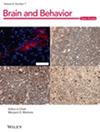Circumferential Aneurysm Wall Enhancement Predicts Recanalization After Stent-Assisted Coiling in Small Unruptured Intracranial Aneurysms
Abstract
Background
Circumferential aneurysm wall enhancement (CAWE) on high-resolution vessel wall imaging (HR-VWI) as a vessel wall inflammation marker is associated with unruptured intracranial aneurysms (UIAs) instability and recanalization after endovascular treatment. This study evaluates the association of CAWE with recanalization of small UIAs (< 10 mm) treated with stent-assisted coiling (SAC) or coiling alone and aims to develop a prediction model for recanalization based on CAWE.
Methods
We analyzed patients with small saccular UIAs undergoing 3T HR-VWI and treated with SAC or coiling alone between October 2018 and May 2024. A four-grade scale assessed aneurysm wall enhancement (none, focal thick wall enhancement, thin CAWE, and thick CAWE). The aneurysm-to-pituitary stalk contrast ratio (CRstalk) quantified enhancement. We investigated the relationship between CAWE and recanalization and developed a recanalization prediction model.
Results
Sixty-five patients with 69 UIAs were included; 11 aneurysms (15.9%) exhibited CAWE, and 10 had a CRstalk ≥ 0.5. Sixty aneurysms (87%) received SAC. Recanalization occurred in 14 of 69 aneurysms (20.3%), assessed by DSA follow-up at 12.6 months. Multivariate analysis revealed that aneurysm size, CAWE, and CRstalk ≥ 0.5 predicted recanalization undergoing coiling with or without stent assistance. A scoring prediction model was created using aneurysm size, treatment, embolization occlusion, and CAWE, with scores ranging from 0 to 6, where scores ≥ 3 indicated high risk and a C-statistic of 0.892 demonstrated excellent discrimination.
Conclusions
CAWE on HR-VWI is a significant imaging marker for predicting recanalization in small UIAs undergoing SAC. The proposed recanalization risk scale needs validation in larger studies.


 求助内容:
求助内容: 应助结果提醒方式:
应助结果提醒方式:


